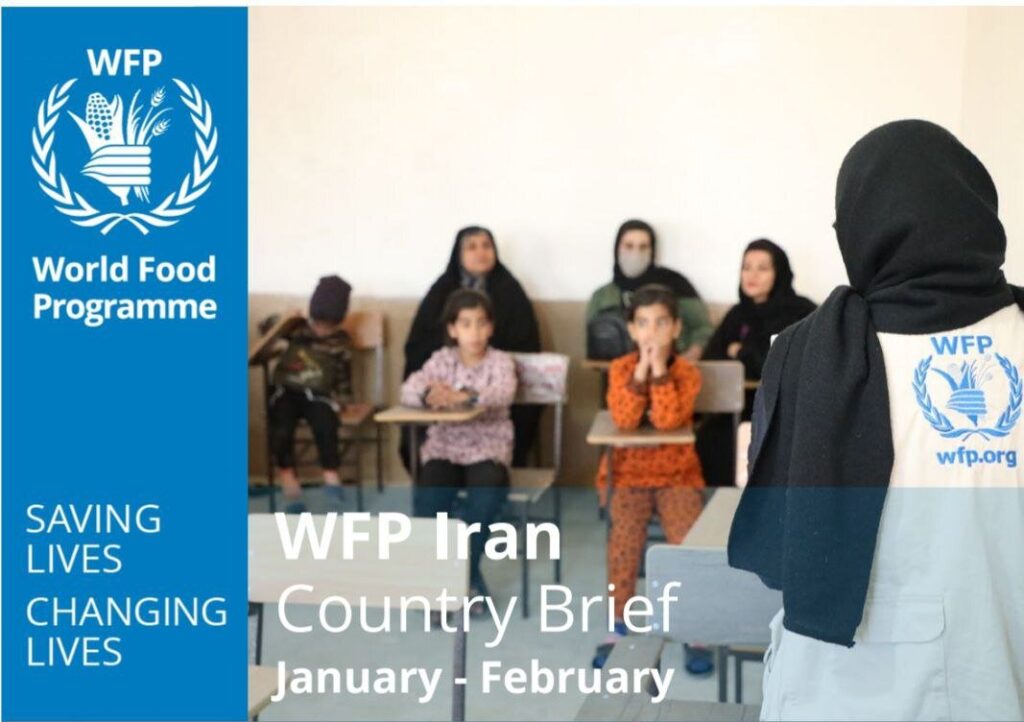Tehran – The World Food Program (WFP) has released a report describing its activities in Iran over several months in January and February.
In the first two months of 2025, WFP’s general food aid reached 33,068 beneficiaries in January and 33,147 in February, including both Afghanistan and Iraqi refugees.
The WFP distributed 543 mt of fortified food in January and 405.5 mt in February, consisting of flour (12 kg per person) and vegetable oil (810 ml per person).
In addition to this, WFP will provide cash assistance to 7,394 and 7,315 refugee households in Afghanistan and Iraq in January and February, respectively.
Under cash-based remittances, following the revision of WFP’s Minimum Expense Basket (MEB) in November 2024, the Centre for Alien and Foreign Immigration Affairs (CAFIA) confirmed the adjustments to cash transfer value. As a result, WFP doubled cash transfers from January, providing better support for important living expenses.
In either month, households led by male refugees received 5 million (IRR) and 5 million (US$7.5) per person. Households led by refugee women received 6 million (US$9) per person, increasing food insecurity due to limited access to job opportunities.
Following WFP’s Disaster Inclusion Work Plan 2023, WFP implemented a pilot initiative in two settlements. Shahidnaselli in Markaj and Mohajerin in Semnan province provide disability refugees with a monthly cash top-up of 1.5 million (USD 3) per month in eight colonies.
In January, WFP supported 364 disability refugees across nine settlements and 374 refugees in 10 settlements in February, each receiving an additional monthly cash support of US$3 million (USD4.5) in addition to regular aid.
Support was covered in February after it was introduced into two refugee settlements in two ministries, including Carman, Lorestan, Western Azerbaijan, Fars, Kuzestan, Markaj, Khorasan Razabi and Semnan provinces.
In March, WFP released its 2023 report on Iran based on the Provisional State Strategic Plan (2023-2025).
In 2024, WFP provided a combination of in-kind and cash assistance to address the food needs of more than 33,000 vulnerable refugees in Iran. As a result, 70% were able to consume food at acceptable levels. This remains almost stable compared to the previous year.
Since August, WFP has increased the value of cash transfer eligibility by 25% and has actively helped to alleviate the immediate economic challenges reported by refugees.
The WFP has maintained its presence in Iran since 1987, focusing primarily on addressing the food security needs of refugees from Afghanistan. Iran has hosted refugees for over 40 years. Most refugees live in urban, urban and rural areas, often integrated with host communities, along with people in refugee-like circumstances. However, the most vulnerable refugees living in 20 settlements in 13 states face a volatile food security situation that requires ongoing humanitarian assistance from the WFP.
WFP provided eligible refugees living in their residences with food assistance, education support and livelihood opportunities through physical food distribution, unconditional cash transfers and capacity building initiatives.
mt/mg

